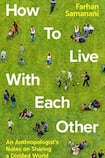
In his fascinating and important new book, Farhan Samanani shares his study of Kilburn, where he became involved through interviews, volunteering at a local youth club and, vitally, hanging out. His scope and range of reference is extensive and worldwide with a particular interest in Ireland, but he returns to Kilburn continually to show its relevance to his concerns – all our concerns, as his title indicates.
Kilburn exhibits what Vertovec calls “superdiversity” and although Samanani does not gloss over inter-community tensions, he persuasively presents it as a successful example of people generally getting on, at heart, he suggests, because of the hardships all new communities coming there endured. Samamani singles out the need for people to work together against rack-renting landlords – I remember not far from Kilburn the days of Rachman: exploitative landlords would house immigrants in poor accommodation because they were refused alternatives elsewhere.
Cultural adaptability
Working together requires cultural adaptability and Samanani is particularly interesting here, showing how Somalis use ancestry as “a flexible metaphor”, noting “Definitions of race or nationality get rewritten all the time”, that “Anthropology shows us that there is almost nothing fixed or fundamental about group identities at all”.
What does this mean on the ground? Samanani cites The Return of Colmcille project in Derry as an example of creatively finding a part of heritage and identity that communities in conflict can both own. “For anxious parents in Kilburn . . . ethnic heritage was used as shorthand for everything from the capacity to succeed at school, to the ability to think and act ethically. If children were going astray, it was because they were not Eritrean, or Caribbean or Somali enough.”
Fragmentation occurs at an abstract level: Samanani discusses the idea of blackness his anti-racist activist Saabira valued – encompassing migrants from the Caribbean, India, China and elsewhere – which seems to be breaking down and cites new research suggesting this is now a general trend.
However, co-operation over practical issues still draws people together, as with the pressure group KAT (Kilburn Aging Together) which campaigned for more local benches – controversial as many people imagined they would encourage the homeless and drinkers. Especially heartening for me was Samanani’s visit to a Kilburn Irish music night. The packed audience clearly came from many ethnic backgrounds and he asked his host about this who replied: “This whole pub. Totally Irish.” The landlord could have been Leopold Bloom.










